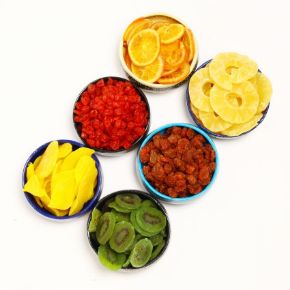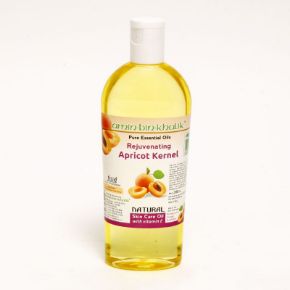Allah the Exalted said: “There comes forth from their bellies, a drink of varying color wherein is healing for men. Verily, in this is indeed a sign for people who think.”
(Al Quran, Surah Al-Nahl, 16:69)
Honey, an age-old food could be defined as a sweet substance prepared (processed) by honey bees from nectar and other juices of plants by passing these through their bodies and enriching and then storing the product in combs in which the honey matures. Honey is produced in different colours according to the type of plants from which the bees drank the nectar. The bees that produce honey does not produce it until it has moved among flowers and plants which produce good nectar and beautiful fragrances, and it keeps away from poisonous plants. The bee works hard to collect the nectar and keeps away from filth. One bee produces approximately 10 g of honey per day; this requires it to fly back and forth 60 times. Producing 1 kg of honey requires approximately 300 bees to make 40 trips.
Honey is used in the prevention and treatment of disease in humans and animals. In ancient time people believed that honey prolonged life. It was also used as a conditioner for strenuous activity by the athletes of ancient Greece. Even today honey is used by mountain climbers and long distance runners and swimmers for whom the excellent nutrition value of a honey-milk diet is stressed. Before the introduction of cane sugar into Europe, honey was the only agent used for the sweetening of foods.
Honey has always been a very popular culinary delicacy as well as an important medical remedy for many millennia.
1. Honey is good for your blood
Honey influences the body in different ways depends on how you consume it. If honey is mixed with tepid water and drank, it has a beneficial impact on the red blood cells (RBC) count in blood. RBCs are mainly responsible for carrying oxygen in the blood to various parts of the body. The Honey-tepid water mixture raises the blood haemoglobin levels, which takes care of anaemic conditions.
2. Honey is antibacterial and antiseptic
Antibiotic activity of honey is mainly responsible for its use since ancient times in healing the wounds due to cut, burns, etc. It has been found to work as an antibiotic when used topically on wounds and burns. The hygroscopic nature of honey enables the wound to dry quickly. This also helps in protecting the tenderness of the skin and cleaning eyes. Its antibiotic nature is due to acidity, hyper-osmotic property and due to the production of hydrogen peroxide by the enzyme system.
Consumption of honey promotes an increase in beneficial antioxidant agents, stimulates antibodies and combats harmful microbial activity. Several studies have also looked at honey in wound treatment. In 1970, in a study of a patient who had had a hysterectomy, that using honey locally on the wounds kept it free from germs for between three and six days only, and that healing took place after two weeks on an average.
3. Honey is used in treating stomach and duodenal ulcers
Honey is an alkaline substance; thus, it reduces the acidity of the stomach and takes away the pain of ulcers. It also reduces the vomiting and stomach ache that result from ulcers. In order for the remedy to be effective, it must be taken 1 to 2 hours before food, diluted with warm water. From modern studies on the effects of honey on stomach secretions such as acids and enzymes, it is clear that honey reduces the secretion of hydrochloric acid to natural levels, thus helping in the healing of stomach and duodenal ulcers. The basic components of honey which is 40% dextrose, may be an effective factor in the response of body tissues to it, as no other food shares this characteristic. It is preferred to any kind of treatment and that is because it is a natural food containing a high level of dextrose which does not have a harmful side effect like drugs.
There has been a lot said about the negative effects of white sugar on the body. Honey is a great substitute that is as sweet but also safe to consume. Though honey also includes simple sugars in its chemical makeup, it is quite different from white sugar in that it contains about 30% glucose and 40% fructose – two monosaccharide or simple sugars – with 20% other complex sugars. Honey also includes dextrin, a starchy fiber. This combination helps the body to regulate blood sugar levels. Besides, the sugar that is manufactured from honey does not cause fermentation or the growth of germs, hence children who eat honey have less need for antibiotics than those who do not use it.
5. Honey is effective in treating diarrhoea
It has been proved through an experiment carried out by a number of researchers that honey is effective in reducing the period of diarrhoea in people who have infections of the stomach and intestines. That is because of the germ-killing properties of honey.
Dr. Sackett, a germ specialist, and researcher in the Colorado Agriculture College carried out tests to find out the effectiveness of honey in killing germs. He put germs that cause various diseases in dishes of pure honey, and he found that all germs died including the germs that cause Typhus, which died after 48 hours; the germs that cause Typhoid fever, died after 24 hours; and the germs that cause Dysentery, which died completely after 10 hours.
Doctor Lockheed, who works in the Enzymology Department of the university of Ottawa, repeated the same experiment as Sackett under different circumstances, and he confirmed the soundness of his results and proved beyond doubt that the germs which cause human disease died as a result of the action of pure honey. Experiments have also shown that Honey can be used as an alternative to glucose which is usually given to patients suffering from diarrhoea and that the fructose that is found in honey encourages absorption of water from the intestine without increasing the absorption of sodium.
6. Healing eye infections
Pure Honey can be applied topically twice a day to the lower conjunctiva (the mucous membrane that covers the front of the eye and lines the inside of the eyelids) and is very effective in treating some diseases of the surface of the eye. Honey can be used in treating patients with Corneal infection, Chronic inflammation of the eye, regular inflammation of the eye, dryness of the conjunctiva and Chronic inflammation of the edge of the eyelid. Pure honey is applied exactly like a cream, two to three times per day according to the state of the eye. Applying pure honey to the lower conjunctiva leads to a temporary burning sensation in the eye and caused the eye to water accompanied by redness in the eye, but this quickly disappears and in a wink, soothes the eye.
7. Honey is good for yoga practitioners
For those doing yogic practices, consuming honey brings a balance to the blood chemistry and is especially recommended. Regular intake of Honey makes the system more vibrant. Further, honey is used most commonly as a vehicle of medicines in Ayurvedic treatments, because of its freedom from any adverse effect and its easy assimilation. This enhances the effect of the medicine.
8. Honey is an energy food
One of the important uses of honey in traditional medicine is an instant energy booster. As mentioned above, honey contains many different kinds of sugar molecules, especially glucose and fructose. However, unlike white sugar where fructose and glucose are combined as sucrose and require an additional step in the digestive process, in honey, these two sugars are separate. Thus, the glucose acts as an instant energy source.
9. Honey helps children sleep soundly, and calms the nerves
Honey contains calming and strengthening elements in a reasonable amount, such as sodium and potassium. If you take a large spoonful of honey before sleeping, you will sleep calmly uninterrupted by disturbing dreams or anxiety. Preliminary results from several studies indicate that honey can improve the quality of sleep in children. Based on parents’ opinions, the studies concluded that honey reduced cough among children during the night and help them sleep more soundly. Honey also reduces anaemia and rickets in breastfed infants. Doctors advise giving the child a spoonful of honey every day, beginning in the fourth month, by mixing it with milk. This will ward off the risk of deficiency in iron and calcium in the mother's milk.
10. Bedwetting
The child who is affected with this problem, which is usually due to psychological or nervous causes, is to be given a small spoon of honey just before bed, which will have a positive effect in calming his nervous system, which will help the bladder to relax and expand while he is asleep, the amount of concentrated sugar in honey also absorb water from the child's body.
11. Remedy for colds, flues and throat infections
Honey may be inhaled after making a solution composed of 10%honey in water, Or it may be inhaled for five minutes to treat flu, throat infections, and coughs. It is preferable to follow that with chewing a piece of natural honey on the comb. This remedy also helps to heal the nasal cavities and remove sensitivity in the nose.
12. Treating chronic liver infection
Honey increases the liver's store of glycogen by increasing the glucose in the blood, thus helping the liver to perform its functions and reduce its burden.
13. Honey in cosmetic skin preparations
The mixture that is composed of honey, lemon and glycerine is regarded as one of the best ancient medical prescriptions for treating cracks and roughness in the skin, cracked lips, infected lips, and as a remedy for sunburn and skin spots. There are many creams for treating skin that include honey as a basic ingredient.
14. Treatment of muscle spasms
Honey may be used as a remedy for muscle spasms resulting from any sports activity and offers similar benefits for the muscles of face and eyelids. These may be relieved by taking a large spoonful of honey after every meal for three days.
References:
1. ISLAMIC MEDICINE – the key to better life. By Yusuf Al-Hajj Ahmad
2. Bee-Keeping activity in Kashmir – KVIB
3. Honey as a Food and in the Prevention and Treatment of Disease - Douw G. Steyn



































